You must be logged in to post a review.
4th (Queen’s Own) Light Dragoons – 1854
€68.00
Figure to assemble and paint
Ref.: 5 – CRV
Weight: 260 grs.
Material: White Metal
Number of Pieces: 16
Historical Review:
- Raised in
1685 as – The Princess Anne of Denmark’s Regiment of Dragoons.
1751 – 4th Regiment of Dragoons.
1788 – 4th (Queen’s Own) Regiment of Dragoons.
1818 — 4th (Queen’s Own) Regiment of Light Dragoons.
1861 – 4th (Queen’s Own) Regiment of Hussars.
1921 – 4th Queen’s Own Hussars.
1958 – Queen’s Royal Irish Hussars (after amalgamated with the 8th King’s Royal Irish Hussars
The 4th Queen’s Own Hussars was a cavalry regiment in the British Army, first raised in 1685. It saw service for three centuries, including the First World War and the Second World War.
The regiment was first raised by the Hon. John Berkeley as The Princess Anne of Denmark’s Regiment of Dragoons in 1685, as part of the response to the Monmouth Rebellion by the regimenting of various independent troops and ranked as the 4th Dragoons. The regiment transferred its allegiance to King William III in February 1689 and fought the depleted forces of James II in Scotland later that year.
During the 18th century we find the regiment participating in different campaigns, including the War of the Austrian Succession.
At the beginning of the 19th century, the regiment embarked for Spain and took part in the Peninsular War, in the battles of Talavera and Vitoria. Later, in France, it took part in the battle of Toulouse in 1814. After a few years of service in England and Ireland, it embarked for India to take part in the first Anglo-Afghan War, at the battle of Ghanzi in July 1839.
The regiment then saw action, as part of the Light Brigade under Major General James Thomas Brudenell, 7th Earl of Cardigan, at the Battle of Alma in September 1854. The regiment charged on the right flank during the Charge of the Light Brigade at the Battle of Balaclava in October 1854, along with the 13th Light Dragoons, 17th Lancers Regiment, and the 8th and 11th Hussar Regiments.
The brigade broke through the enemy artillery before crashing into the Russian cavalry and driving them back; however, it was unable to consolidate its position as it was under-strength and had to withdraw to its initial position, coming under further attack as it did so. The regiment lost four officers and 55 men in the debacle. Private Samuel Parkes was awarded the Victoria Cross in this battle for saving the life of the bugler, Hugh Crawford.
The regiment became the 4th Queen’s Own Regiment of Hussars in 1861. Winston Churchill was commissioned as a cornet in the 4th Hussars in February 1895.
We find the regiment in both world wars in the 20th century. With the reforms set out in the 1957 Defence White Paper, the regiment was amalgamated with the 8th King’s Royal Irish Hussars to form the Queen’s Royal Irish Hussars Regiment in 1958.
The figure wears the uniform in which they were seen in the Crimean War. Characteristic of the light dragoons was the tall shako which is covered with an oilskin. The saddle is the standard model, up to that campaign, for light cavalry. The sabre is the universal model for the cavalry of 1853.
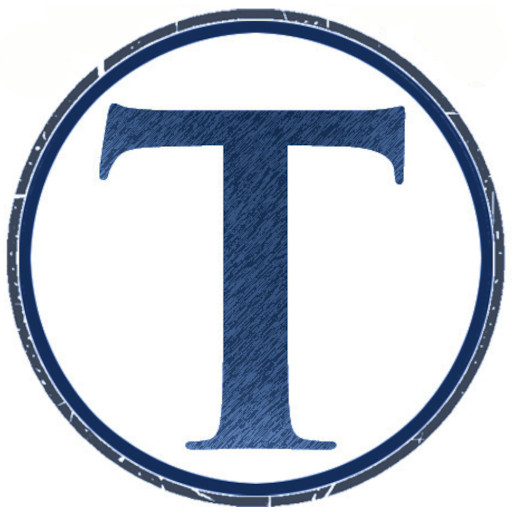
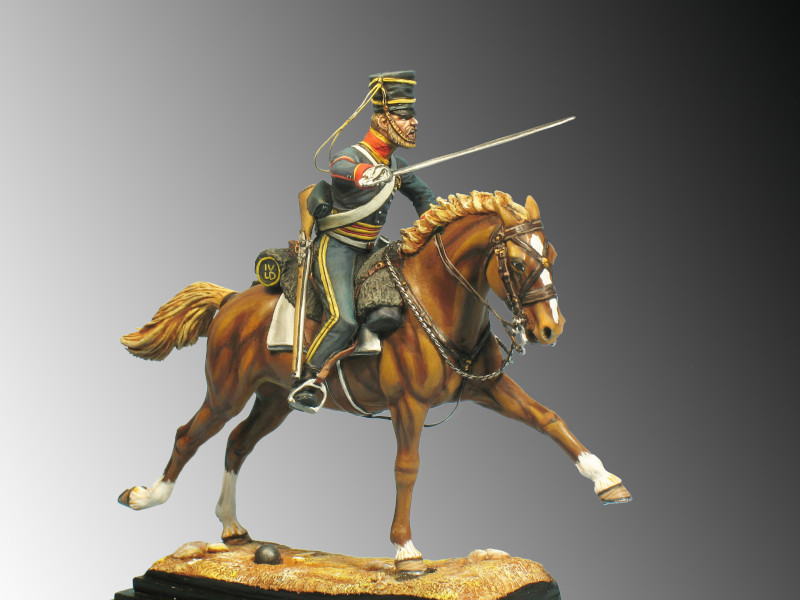
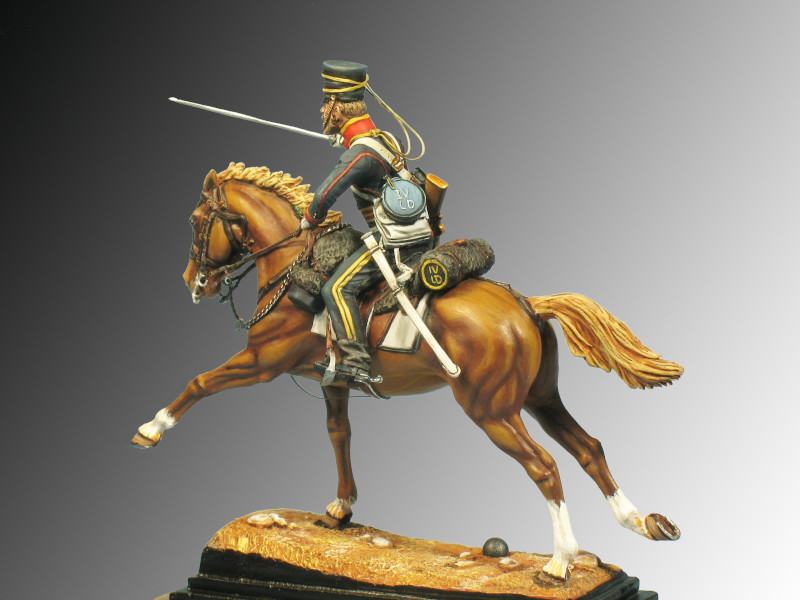


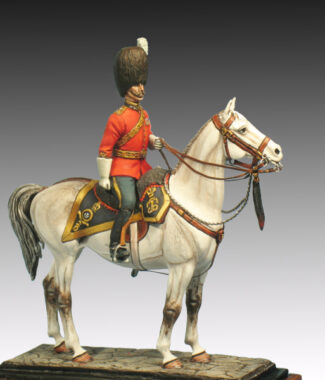
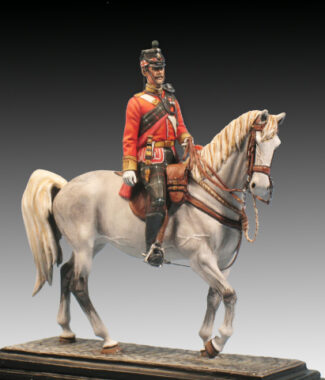
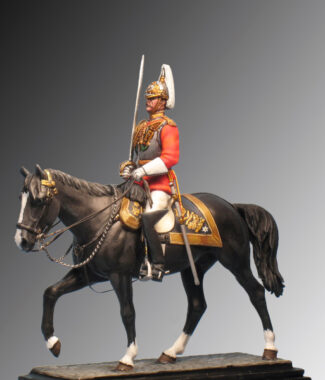
Reviews
There are no reviews yet.